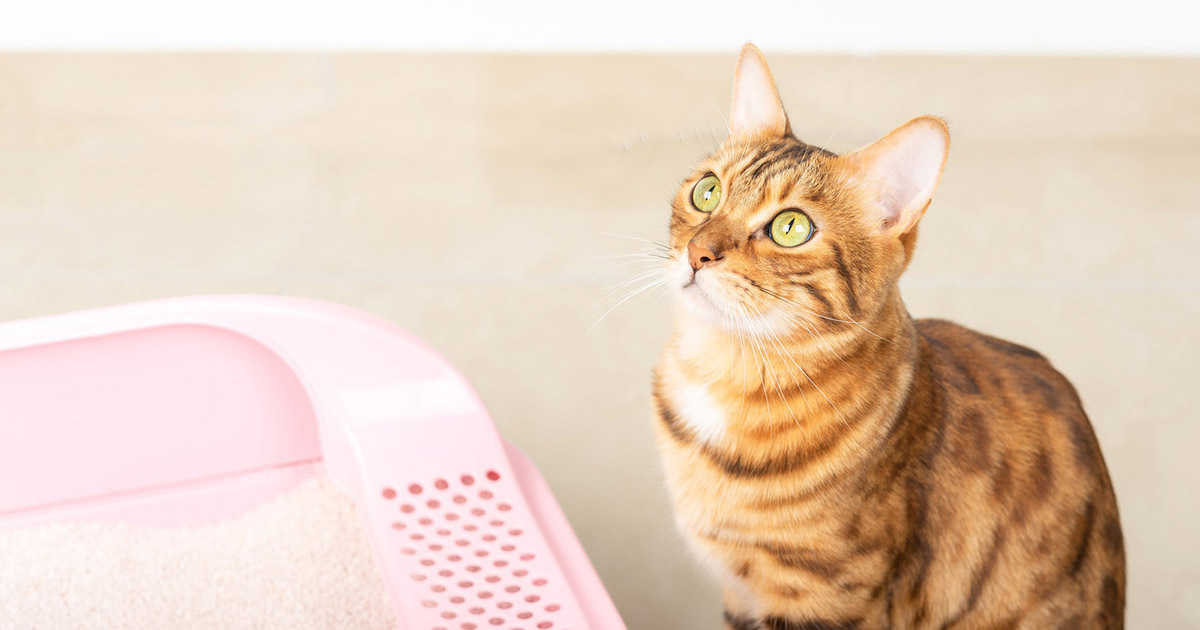We've noticed this post involving Don’t flush cat feces down the toilet below on the net and reckoned it made perfect sense to discuss it with you on this site.

Introduction
As pet cat owners, it's essential to bear in mind how we dispose of our feline close friends' waste. While it may appear practical to purge feline poop down the commode, this method can have destructive repercussions for both the setting and human health and wellness.
Ecological Impact
Flushing pet cat poop introduces unsafe microorganisms and bloodsuckers into the water, positioning a substantial risk to water ecosystems. These pollutants can adversely impact marine life and concession water quality.
Health and wellness Risks
Along with environmental problems, flushing feline waste can additionally pose health and wellness risks to human beings. Cat feces might contain Toxoplasma gondii, a bloodsucker that can cause toxoplasmosis-- a possibly severe health problem, particularly for expectant females and individuals with damaged immune systems.
Alternatives to Flushing
Luckily, there are more secure and much more responsible means to deal with cat poop. Think about the complying with choices:
1. Scoop and Dispose in Trash
One of the most common approach of dealing with pet cat poop is to scoop it into a naturally degradable bag and toss it in the garbage. Make sure to utilize a specialized clutter scoop and throw away the waste immediately.
2. Use Biodegradable Litter
Select naturally degradable cat trash made from materials such as corn or wheat. These litters are eco-friendly and can be safely thrown away in the garbage.
3. Bury in the Yard
If you have a lawn, take into consideration burying pet cat waste in a marked location far from veggie gardens and water sources. Be sure to dig deep adequate to avoid contamination of groundwater.
4. Install a Pet Waste Disposal System
Purchase a family pet waste disposal system specifically developed for cat waste. These systems utilize enzymes to break down the waste, reducing odor and ecological influence.
Final thought
Responsible pet dog ownership extends past offering food and sanctuary-- it also entails proper waste management. By avoiding flushing cat poop down the bathroom and selecting different disposal approaches, we can decrease our ecological impact and safeguard human health.
Why Can’t I Flush Cat Poop?
It Spreads a Parasite
Cats are frequently infected with a parasite called toxoplasma gondii. The parasite causes an infection called toxoplasmosis. It is usually harmless to cats. The parasite only uses cat poop as a host for its eggs. Otherwise, the cat’s immune system usually keeps the infection at low enough levels to maintain its own health. But it does not stop the develop of eggs. These eggs are tiny and surprisingly tough. They may survive for a year before they begin to grow. But that’s the problem.
Our wastewater system is not designed to deal with toxoplasmosis eggs. Instead, most eggs will flush from your toilet into sewers and wastewater management plants. After the sewage is treated for many other harmful things in it, it is typically released into local rivers, lakes, or oceans. Here, the toxoplasmosis eggs can find new hosts, including starfish, crabs, otters, and many other wildlife. For many, this is a significant risk to their health. Toxoplasmosis can also end up infecting water sources that are important for agriculture, which means our deer, pigs, and sheep can get infected too.
Is There Risk to Humans?
There can be a risk to human life from flushing cat poop down the toilet. If you do so, the parasites from your cat’s poop can end up in shellfish, game animals, or livestock. If this meat is then served raw or undercooked, the people who eat it can get sick.
In fact, according to the CDC, 40 million people in the United States are infected with toxoplasma gondii. They get it from exposure to infected seafood, or from some kind of cat poop contamination, like drinking from a stream that is contaminated or touching anything that has come into contact with cat poop. That includes just cleaning a cat litter box.
Most people who get infected with these parasites will not develop any symptoms. However, for pregnant women or for those with compromised immune systems, the parasite can cause severe health problems.
How to Handle Cat Poop
The best way to handle cat poop is actually to clean the box more often. The eggs that the parasite sheds will not become active until one to five days after the cat poops. That means that if you clean daily, you’re much less likely to come into direct contact with infectious eggs.
That said, always dispose of cat poop in the garbage and not down the toilet. Wash your hands before and after you clean the litter box, and bring the bag of poop right outside to your garbage bins.
https://trenchlesssolutionsusa.com/why-cant-i-flush-cat-poop/

I hope you liked our excerpt about Can You Flush Cat Poo or Litter Down the Toilet?. Many thanks for spending some time to browse our piece of content. Those who enjoyed reading our blog posting if you please don't forget to pass it around. Thank-you for taking the time to read it.
Click Here